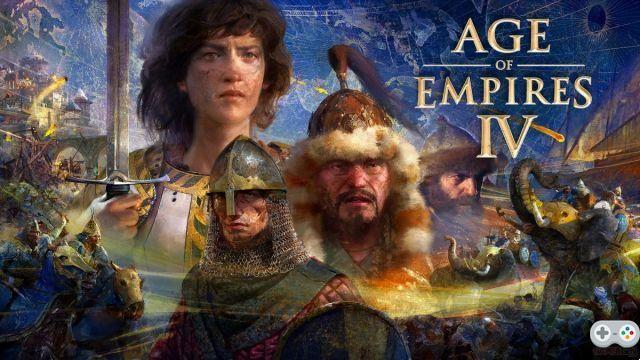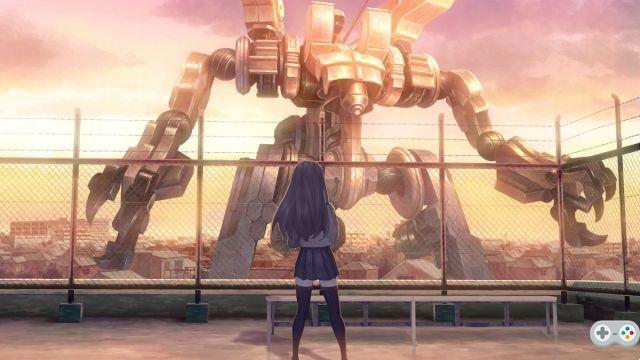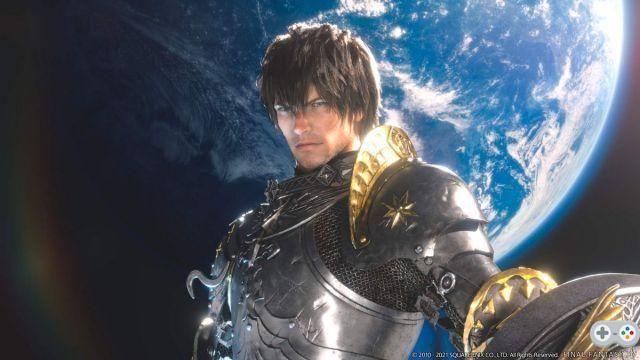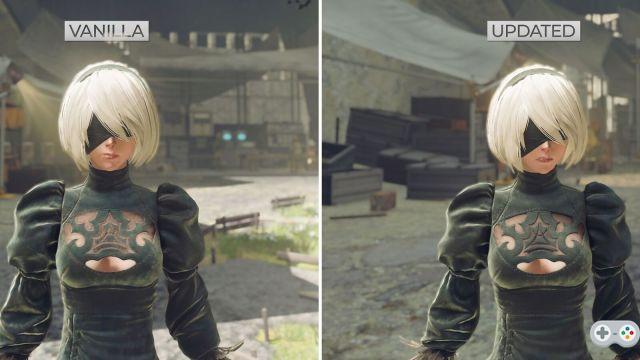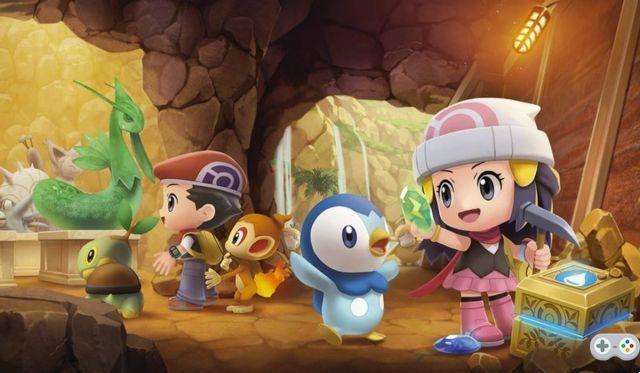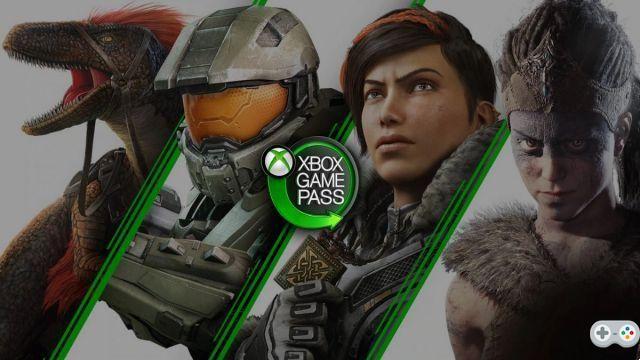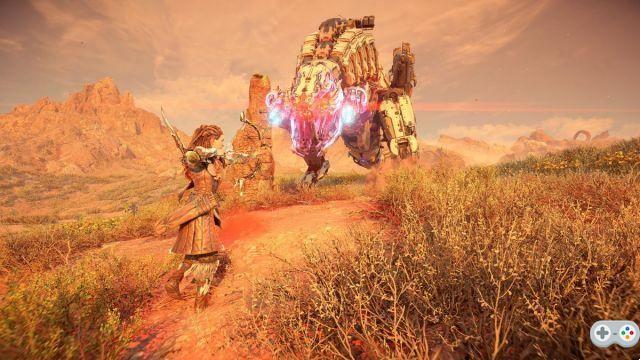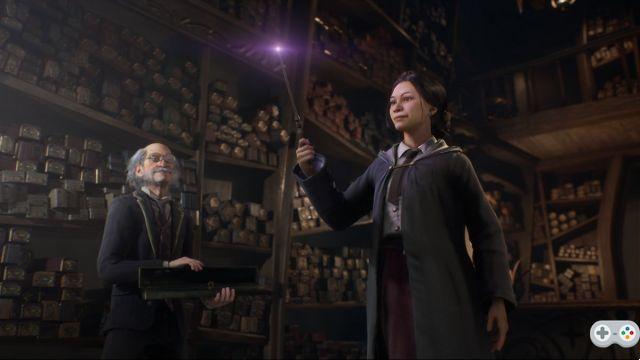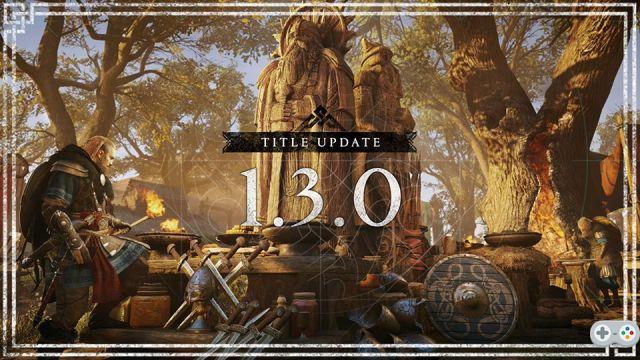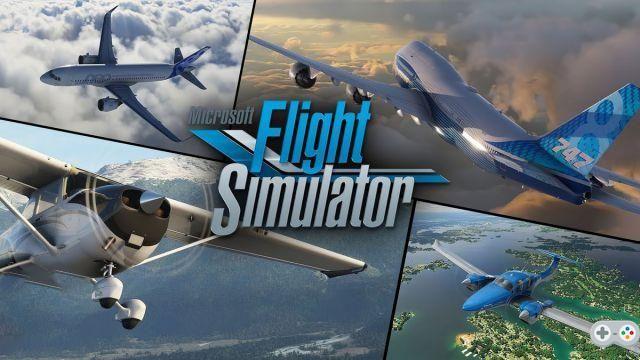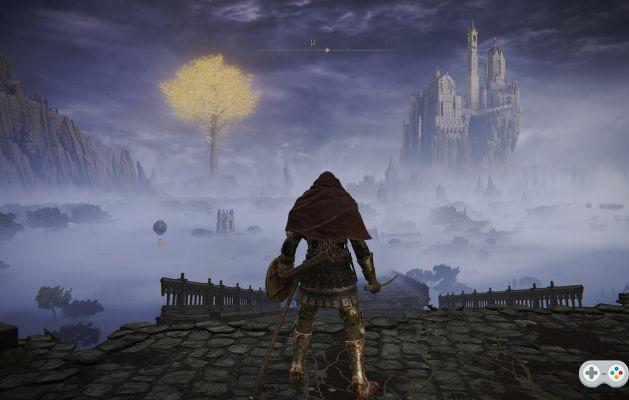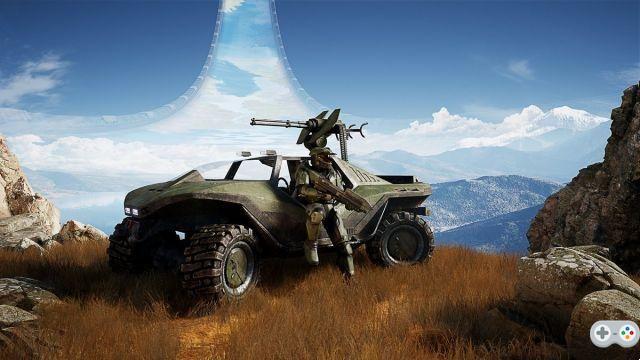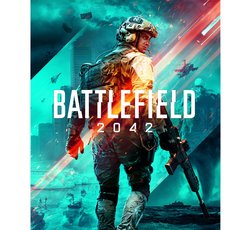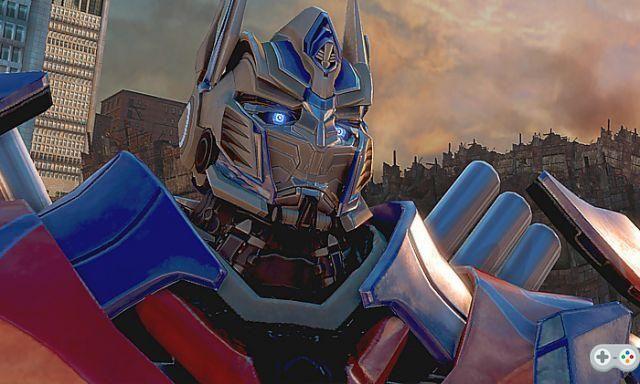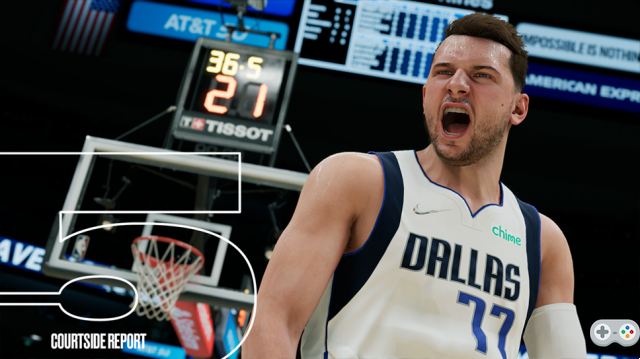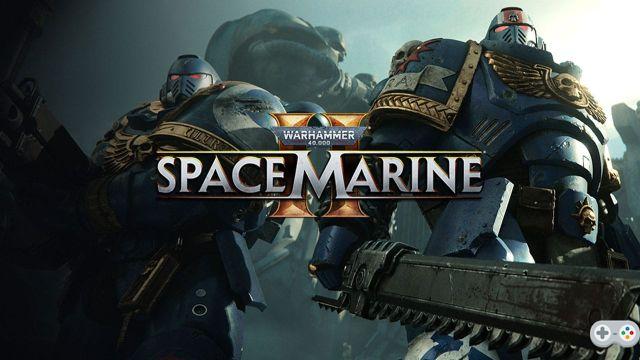Things promised, things due, Total War Warhammer III honors a new season to complete a cycle that The Creative Assembly began in the spring of 2016 with a unanimously acclaimed first opus. Landed in the fall of 2017, the sequel made it possible to drive home the point and the question that arises today and whether the five-year wait for this third opus is up to it.
9
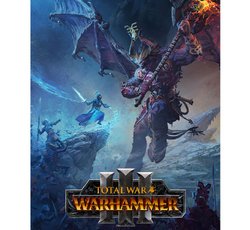 View PriceRead ConclusionTotal War: Warhammer III
View PriceRead ConclusionTotal War: Warhammer III
- 8 very different factions
- Still as efficient as ever
- Diplomacy progresses
- Epic battles
- Upcoming Mortal Empire Mode
- Campaign script
- Aging graphic appearance
- Little progress on AI
Since the announcement of the Total War Warhammer project, the British from The Creative Assembly had mentioned their desire to produce a trilogy in order to present different aspects of the world imagined by Games Workshop. Total War Warhammer's first name focused on the Empire of Men, the most powerful nation in the Old World. In the sequel, it was a question of traveling to the New World and Lustria so it could not be more logical to see our "epilogue" section give pride of place to the icy regions of the North, Kislev at the top of the list... but not only. On a strictly geographical level, Total War Warhammer III (TWW3) comes to renew things perfectly. First good point.
Test carried out on Steam thanks to a code provided by the publisher and a very very large package of hours of play to get to know the various factions. Total War Warhammer III will be released on February 17, 2022 on PC Steam and via GamePass.
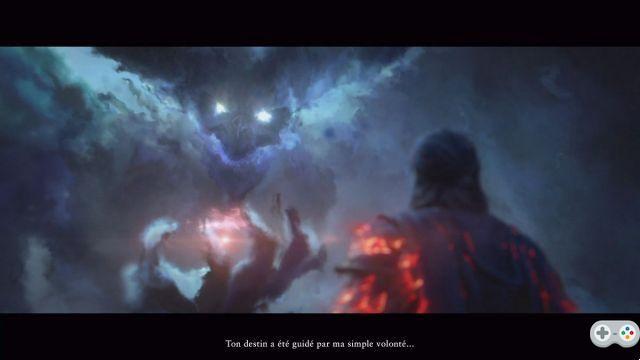
Khorne, d’hab’ on dance ?
As we said, TWW3 changes the setting to transport us to the Great North of the Old World, on the edge of Kislevite territory which has always been at the forefront of Chaos incursions. As you can imagine, the latter are at the heart of the TWW3 campaign which begins when Ursun, the Bear-God of the Kislevites has been betrayed and seriously injured by a Prince of Kislev who has allowed himself to be corrupted by Chaos. Since then, Ursun has been imprisoned and for the Kislevite faction, the sole objective is to find him and save him from the clutches of Be'lakor, the first and greatest of the Daemon Princes.
Kislev is logically the first faction that we tend to choose for a TWW3 campaign. However, this choice comes after a long prologue during which The Creative Assembly tells us precisely the deception of Chaos which led to the capture and injury of Ursun. This injury is clearly not trivial insofar as it is the cause of the horrific suffering endured by Ursun. Regularly, throughout a game, Ursun lets out cries of pain perceived by all the inhabitants, but which especially have the annoying tendency to open portals towards the Realms of Chaos.
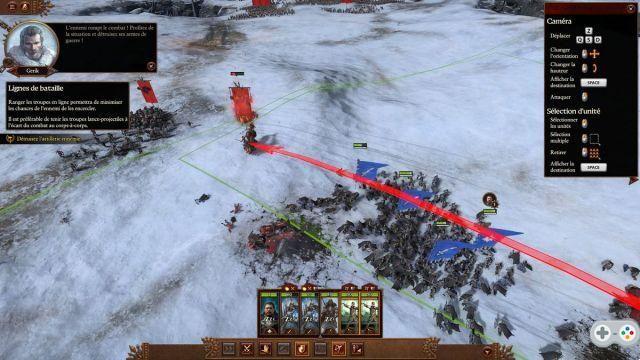
This prologue mini-campaign is completely optional and regulars will be able to get straight to the heart of the matter. On the other hand, for beginners who discover the concept of a Total War in general or a Total War Warhammer more precisely, it is an almost obligatory passage. The level of difficulty is not very high and The Creative Assembly is especially very careful to introduce the main mechanics of the game in a very progressive, very didactic way. Remember that a Total War is distinguished by its dual component which combines management / strategy on a vast campaign map and military tactics on the battlefield.
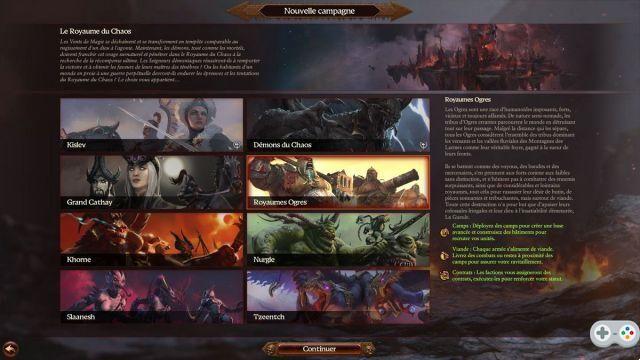
The management part involves developing the different provinces under our control in order to gain power, but also to unlock new types of units, even new powers. It is also from there that we direct our various armies as well as the heroes in charge of more individualistic actions to, for example, cause trouble in the opposing territory. It is still via this management part that we will conduct negotiations with the factions that we do not wish / cannot massacre: we will come back to this, but the diplomacy part has evolved a lot in recent years.
All in all, the different options in the management part are there to make us more efficient in conducting battles. TWW3 is not a pacifist game and sooner or later you have to lead your troops onto the battlefield. There, things generally start with a phase of placement, knowing that we have only a very vague idea of the position and the organization of the enemy. Then the battle can really begin and, as commander of the armies, we control all our troops, regiment by regiment. Of course, this means making the most of the terrain and the strengths/weaknesses of all the units in place.
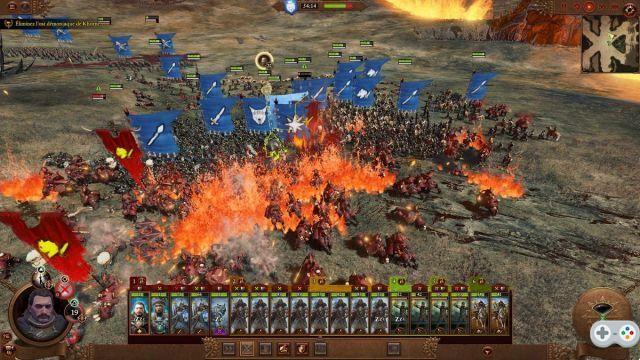
And the war makes us hammer
We will then come back to the other modes offered with TWW3, but once the prologue has been completed / zapped, the heart of the game remains of course the campaign. As in previous games, things change quite significantly depending on the faction selected. They are eight in number with radically different capacities, functioning and objectives. Perhaps the most "classic" to play, Kislev therefore seeks to find the trace of Ursun to save the divinity. Kislev is distinguished by the presence of a special resource in addition to all those used for the construction of buildings or trade.
Devotion is obtained by winning battles, but can also be recovered through buildings or specific quests. The resource is there to materialize resistance to Chaos incursions, but it also serves to combat political tensions within Kislev. Another peculiarity of Kislev: the recruitment of warlords is done via a training interface which involves more planning. Finally, on the battlefield, Kislev stands out for its many infantry/cavalry types, but also for the absence of fantasy creatures – apart from its elemental bear – and a fairly small, albeit mobile, artillery.
JVFR
Like Kislev, the Cathay faction allows you to choose between two lords at the start, which of course grant significantly different bonuses. On Cathay, it is no longer a question of playing with devotion, but the harmony that revolves around the Yin / Yang duality and each unit, hero, building or research leans logically to one side or the other. . All the subtlety of the thing is obviously to maintain a certain balance between the two in order to benefit from the bonuses of one and the other… easier said than done. This is reflected in the construction of cities by the presence of many buildings that turn towards one or the other.
JVFR
We find the same idea of balance in combat with a trick. The balance is not within the army, but through the regiments close to each other: basically, it is better to alternate Yin units and Yang units so that they mutually buff each other. Another specificity is the presence of the Grand Bastion, a wall that must be protected against the forces of Chaos. Cathay has a rich infantry, but more classic than Kislev with fewer hybrid units, some flying units, but a fairly weak ground cavalry. On the other hand, its artillery is powerful, its long-range shooters devilishly effective and its "monster" is the Terracotta Sentinel, a huge bag of hit points.
TWW3 introduces four Chaos factions each under the aegis of a deity. Our favorites are the followers of Nurgle led by Ku'gath, their only champion, a monster of power with many spells, but quite slow. The subtlety of the faction lies in the operation of its constructions: in the cities, one decides on this or that structure, but they then evolve automatically in a cyclical manner from level 1 to level 5 before starting again. This requires constantly adapting its logistics according to the level of the buildings, because as you can imagine, the buffs offered by a level 1 are much lower.
JVFR
Khorne a hurricane passing over me...
On the battlefield, Nurgle is characterized by basic, but very resilient – and very slow – infantry while flying/ranged units are rare and not fundamental. On the other hand, the monsters of Nurgle are really very nice, our preference then for these particularly mobile frogs and with a very successful design. The Slaanesh faction relies on units that are generally faster than those of other factions and can count on some pretty cool poison effects. Flying units aren't his forte, but that's made up for by what is perhaps the most effective cavalry in all of TWW3.
In terms of mechanics, Slaanesh is distinguished by its resource, the devotees that we recover in many ways (conquest, looting, quests...). They are used to activate pleasures in the cities under our control and obtain big bonuses. For its part, Tzeentch focuses on controlling the winds of magic in the regions of the world: the idea is to help our spellcasters or annoy those of our enemies. His special resource is the grimoire. It is used for powerful research and for “changing the Us”: these are schemes to track down opposing armies, break an alliance or even force a war between two factions.
JVFR
In combat, Tzeentch keeps things simple with just two types of melee infantry, two ranged infantry, and several flier units to balance things out. It's a bit the opposite with Khorne, which has a much richer and more varied roster on the infantry side, but which almost completely ignores ranged or flying units. Khorne's armies also benefit from a bonus linked to a special mechanism, Bloodletting: the idea is to encourage the player to chain fights - and victories - so that his armies gain buffs and lower their cost of 'maintenance.
JVFR
To reach the eight, we have two factions left to discuss. First the Demons of Chaos which have a customizable lord that we can therefore adjust to our style of play. A customization which, of course, has an impact on its appearance and whose options depend on our demonic glory. This demonic glory is also a way to unlock the units specific to the four Chaos factions presented above. Indeed, Demons can also customize their army to borrow from others, but this requires significant investment for the best units. Necessarily.
Finally, the eighth faction is reserved for players who have pre-ordered the game. These are the Ogre Kingdoms whose key characteristic is based on meat. Their armies are hungry and you have to monitor their supply or risk seeing them devour themselves! To do this, you can establish camps - even at the enemy's - which work a bit like mini-cities. The Ogres have a roster logically focused on particularly powerful ground creatures and, more surprisingly, not as slow as one might think. The Ogres are real life point bags, but their ranged units, the goblins, are on the contrary very fragile.
demons and marvels
Without being too off-putting, we have tried to emphasize the variety of factions, because this is undoubtedly the most formidable interest of TWW3. Great, because the developers went to great lengths to make these eight factions all play very differently. Whether it's the purely territorial management aspect or leading your troops on the battlefield, you'll proceed completely differently depending on whether you're playing Nurgle or the Ogre Kingdoms. The game mechanics lead to very varied campaigns and, like no other Total War had achieved so far, come to boost the desire to start with another faction.
In the case of a test like this, it is also delicate, because it would be necessary to dig each campaign with each faction to claim any exhaustiveness. The regulars will tell you, knowing that a single campaign is spread over several dozen hours, it was mission impossible if we wanted to publish before mid-March. Still, our various tests – of a dozen hours each – on the eight factions have fully reassured us on one point: The Creative Assembly has done an excellent job on all of them and, even if their style of play will not suit everyone, there is really something to be immensely happy about.
JVFR
Apart from faction specifics, the purely management / strategy aspect of TWW3 has hardly evolved since the previous opus. The campaign map has gained in readability and the interface is also cleaner and more refined. In fact, it is much easier to discover the game than with the first two parts and The Creative Assembly has even made things more welcoming than on historical opuses like TW Three Kingdoms. The graphic aspect is in progress, but there things are much more discreet. On the campaign map, we take advantage of some good quality effects, but when switching to battle mode, we must recognize that the game engine is starting to date.
JVFR
The units take advantage of often limited animations, but it is especially the movements of crowds which struggle to convince with soldiers who remain “in packages” when they should shift to face the enemy. Compared to historical opuses, TWW3 is handicapped by the presence of fantastic units whose attack animations are not fittings with the rest of the troops. These are visible defects for the spectator, but in the heat of the moment, it is not very serious: we benefit much more from the variety of approaches authorized by these extraordinary creatures whereas TW Three Kindgoms could appear a little " plan-plan”.
Compared to TWW2, The Creative Assembly has also arranged for the theaters of battle to be more varied and allow you to experiment with other things. Oh, don't get fired up, it's nothing groundbreaking, but you can feel that extra care has gone into these battle maps. On the contrary, by the way, siege maps that progress from TWW2, but seem almost modeled on those of TW Troy. The relief is always more important, but we would have liked even more verticality in order to take full advantage of our flying creatures. Still, we are aware of the difficult balancing caused by these units.
JVFR
The Ska-come and go as dry
A balance from which The Creative Assembly is doing well… well, from what we have been able to judge. Indeed, we do not yet have a great experience of all the factions and it is certain that flaws will be noticed by the most expert players. In the meantime, whether in the campaign or in the dedicated battles, we haven't found much to complain about except, of course, the pathfinding problems of the artificial intelligence or its tendency to gather its troops in improbable blobs. Let's not be too harsh here, because on high difficulty, it will give many more players a hard time than in previous games.
No way to write a novel, but there would still be a lot to say about this conclusion to the TWW trilogy. We could go into the detail of each faction to evoke the concept of the Kislevite Atamans or the compass functionalities at Cathay. We would have to evoke the plague cauldron of Nurgle capable of creating horrible diseases to spread among the enemy or the “secondary” armies of disciples in Slaanesh. Let's talk more about quest battles and survival battles. The first are obligatory passages to advance the scenario.
JVFR
They are based on large cards and involve regularly adjusting your strategy. They are supplemented by the survival battles which offer us to attack the fortresses of Chaos and capture “points”. They have a bit of a tower defense feel to them so keeping those points means dealing with ever trickier waves of Chaos forces. To counterbalance, there are also more supply points to repel the enemy. Without it being a question of revolutionizing the TWW concept, these battles constitute additions, very pleasant variations.
JVFR
Finally, impossible to finish without mentioning the multiplayer. To be completely honest, we can unfortunately only describe the options available, because we did not have the time to delve into them. Still, with its dozens of different maps, its multiple playstyles and the possibility of participating in fights against the AI, against other players or in a ranked match, TWW3 should not have to be ashamed of the comparison with its ancestor. It also seems to have to improve things a little on the side of the multiplayer campaigns which are here three in number: two to eight players and one, more compact, limited to three players.
The Kingdom of Chaos is the multiplayer version of the single-player campaign, no more and no less, while Darkness and Discord focuses on the Cathay region. Finally, There's Something Rotten in Kislev takes the name of a famous role-playing campaign for the more tight ambitions thanks to its limit of three players. This campaign will logically be the shortest, but in order to avoid endless games, the studio has implemented the system of simultaneous turns. In addition, at the start of a battle, other players have the opportunity to lend a hand – to the player or to the AI – by taking control of a regiment. Nice.
JVFR
Total War Warhammer III, l'avis de JVFR
If The Creative Assembly took its time – five years – to bring us the conclusion of Total War Warhammer, we can say that the studio did not make fun of the world and, except for the technical aspect of things, it did put the small dishes in the big ones to bring back all the fans of the franchise with happiness. TWW3 stands out from the start as the most efficient, the most complete and the most successful of the three parts. Best of all, it's also the best of all of Total War because it still takes so much advantage of the aesthetic and tactical variety offered by these fantastical creatures, heroes, and spellcasters.
Inevitably, on historical opuses, the room for maneuver is more limited, but after having launched a battle on TWW3 it is difficult to return to TW Three Kingdoms. Some players will no doubt regret that the five years of development have not been used more to boost the graphics engine, especially during battles, and we can also regret that, as with any Total War, the waiting time between rounds increases as the storyline campaign is a bit wobbly. This in no way diminishes our enthusiasm for what is a must for any management/tactics enthusiast. A great way to end the trilogy.
9
Having announced that TWW3 would be the conclusion of its Warhammer trilogy, The Creative Assembly had no interest in missing out. While waiting for the arrival of the Mortal Empire mode, the balance sheet is already a success on almost all lines thanks to its radically different factions and its epic battles like never before.Most
- 8 very different factions
- Still as efficient as ever
- Diplomacy progresses
- Epic battles
- Colossal lifespan
- Much improved multi co-op
The lessers
- Upcoming Mortal Empire Mode
- Campaign script
- Aging graphic appearance
- Little progress on AI
- The tours are alloonggeennt




